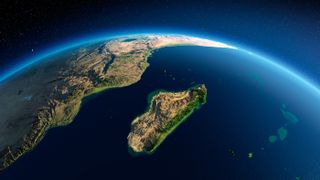Madame Tussauds removes Prince Harry and Meghan figures from Royal Family set
Wax figures of Prince Harry and his wife Meghan have been separated from the rest of the royals at Madame Tussauds in England.
The move follows the Duke and Duchess of Sussex’s announcement that they plan to step back as “senior members” of the Royal Family to “carve out a progressive new role within this institution.”
The royal display at the popular London tourist attraction saw the Sussexes standing next to Queen Elizabeth II, the Duke of Edinburgh, the Prince of Wales, the Duchess of Cornwall and the Duke and Duchess of Cambridge.
“Alongside the rest of the world we are reacting to the surprising news that the Duke and Duchess of Sussex will be stepping back as senior Royals. From today Meghan and Harry’s figures will no longer appear in our Royal Family set,” Steve Davies, general manager at Madame Tussauds London, said in a statement.
“As two of our most popular and well-loved figures they will of course remain an important feature at Madame Tussauds London as we watch to see what the next chapter holds for the them.”
THE TUSSAUDS SCHOOL OF FALSIFICATION
OF HISTORY
NOW YOU SEEM THEM

NOW YOU DON'T






/arc-anglerfish-tgam-prod-tgam.s3.amazonaws.com/public/OAMUT6NCH5BHRKOCKGXFM457W4.jpg)
/arc-anglerfish-tgam-prod-tgam.s3.amazonaws.com/public/NRVEUYKHPNH6FAK4X46VM3L6OE.jpg)
/arc-anglerfish-tgam-prod-tgam.s3.amazonaws.com/public/JXFE5ZCWNVEGNJHSXVQEX3YOZI.JPG)
/d3d444jn19227z.cloudfront.net/thumbnails/5e164fe24cedfd0009d680ae/2020-01-08T214147Z_1_LOP000LPWO9WG_RTRMADP_BASEIMAGE-960X540_IRAN-CRASH-TRUDEAU-ROUGH-CUT.JPG)
/d3d444jn19227z.cloudfront.net/thumbnails/5e1677ae4cedfd0009d68e1c/n_Cda-Iran-Plane-Crash-Politics20200108T1842.jpg)
/arc-anglerfish-tgam-prod-tgam.s3.amazonaws.com/public/OAMUT6NCH5BHRKOCKGXFM457W4.jpg)
/arc-anglerfish-tgam-prod-tgam.s3.amazonaws.com/public/CDHJM6G2JBBPZOLS62JPQD774M.jpg)
/arc-anglerfish-tgam-prod-tgam.s3.amazonaws.com/public/AEBFDG6VBZDLHGZ6K6HFOTGHGE.jpg)
/arc-anglerfish-tgam-prod-tgam.s3.amazonaws.com/public/WIFVGYSC6FCOZNOPHCUNXKIY34.JPG)
/arc-anglerfish-tgam-prod-tgam.s3.amazonaws.com/public/US3O7SDFCZB4HGDCX2UKIHACUA.JPG)
/arc-anglerfish-tgam-prod-tgam.s3.amazonaws.com/public/5O2YDZ5SJJCBXMQ3TMQOJAMVQQ.jpg)
/arc-anglerfish-tgam-prod-tgam.s3.amazonaws.com/public/A2HCMJT5FNCWJPNVZC5GQ7XZVY.jpg)
/arc-anglerfish-tgam-prod-tgam.s3.amazonaws.com/public/ZCMIYNCU7FGEDNUQGCVMRY5K7Q.JPG)


